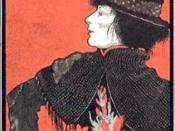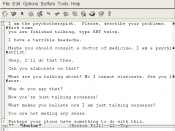In the Oxford dictionary, the definition of change takes on a few meanings. Among these, change is stated as meaning, 'To go from one phase to another' or 'To undergo transformation or transition'. At the end of act IV, the audience is aware of two changes in Eliza's character. Firstly, that she has had enough of being a 'lady' and will defy Higgins for his selfish motives, and secondly, that she can think for herself as an independent woman. As is Eliza's case in Act III to IV, it is entirely obvious to the readers of her change in both persona and demeanor.
At the beginning of Act III, Mr. Higgins is seen violently entering the abode of Mrs. Higgins at her at-home day. Everything seems to be going well, and Higgins is acting crudely, but normally. All goes well at the house, including Eliza's entrance. She greets everyone with an appropriate 'how do you do', and continues to chat about the weather patterns.
The conversation starts to head downhill when Mrs. Eynsford-Hill mentions that there is a lot of influenza about this spring. Forgetting her position and manner, Eliza promptly states that her aunt died of influenza, and dives even further in when she says that she believes that the woman was 'done in'. Eliza's guise falters. Everyone glances at each other and continues listening. This is the first instance of change the audience can see in Eliza. From being a fine, upstanding lady who talks about the weather and the time of day, she is obviously falling off the edge. Everything in the conversation goes downhill from here, the Eynsford-Hills and Mrs. Higgins not knowing what to think. Towards the end, Higgins tries to explain to the others that Eliza's crude speech...


